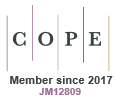Just Accepted
This article has been peer reviewed and accepted for publication. It is in production and has not been edited, so may differ from the final published form.
An Evaluation of Line Transect Sampling Using Drones with Thermal Sensors for Estimating Deer Abundance
Abstract
Context: Advances in uncrewed aerial vehicle (UAV) technology have enabled the collection of previously infeasible data on wildlife species. One use of UAVs that has received considerable attention is density estimation of deer; however, the accuracy and precision of these estimates remain poorly understood. Aims: Our goal was to assess the precision and accuracy of white-tailed deer density estimates gathered using UAVs equipped with thermal sensors during line transect sampling, and we evaluated the influence of transect spacing on the variability of these estimates. Methods: In this study, we used a quadcopter UAV equipped with a thermal sensor to estimate white-tailed deer densities. We flew pre-programmed flight paths along transects spaced at 76 m and 152 m over the Auburn Captive Facility (ACF), a 174-ha high-fenced property in Alabama with a largely known deer density, and two additional high-fenced properties in Alabama with unknown deer densities during January–March, 2023. Key Results: The estimated deer density for ACF using a camera trap survey was 0.49 deer/ha (+/- 0.06, 95% CI). Mean nightly UAV estimates were 0.53 deer/ha (+/- 0.03, 95% CI) and 0.52 deer/ha (+/- 0.07, 95% CI) for transects spaced 76 m and 152 m, respectively, indicating relatively high accuracy. Coefficients of variation (CV) for nightly density estimates of this site were 8.4% at 76 m and 18% at 152 m. We found similar results for the two additional properties. Transects spaced 76 m apart were found to be precise (2.4 to 4.6% CV) with as few as two flights while transects spaced 152 m apart required additional samplings to reach a similar level of precision (5.6 to 11.3 % CV). Conclusions: Our study demonstrates that thermal drone technology can generate precise and relatively accurate estimates of deer density during line transect surveys given proper flight planning. Differences in coefficients of variation between transect spacings suggest that closer-spaced transects offer superior precision. Implications: Our study provides fundamental information with regards to transect spacing for thermal UAV deer abundance line transect surveys and demonstrates the efficacy of this technology for generating estimates of deer density for use in management and monitoring.
WR25013 Accepted 07 October 2025
© CSIRO 2025



